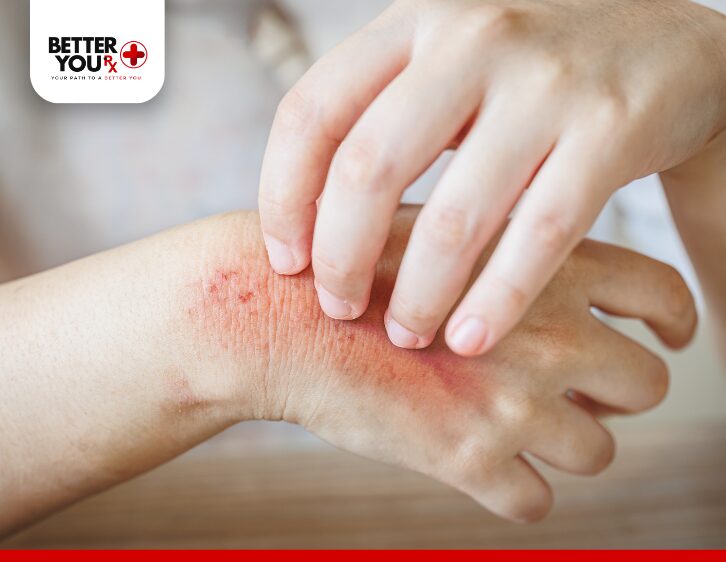Can Certain Foods Impact Your Ozempic Side Effects?
As the popularity of anti-obesity medications like Ozempic®, Wegovy™, Mounjaro®, and Zepbound® continues to rise, many people are considering whether these medications are the right option for their weight loss journey. If you’re one of them, you’re likely wondering about the side effects of these GLP-1 agonist medications. While these medications are highly effective in weight management and controlling blood sugar levels, they can also come with certain gastrointestinal (GI) side effects such as nausea, vomiting, constipation, and heartburn.
Understanding How Food Affects Ozempic Side Effects
If you’re beginning your treatment with Ozempic, it’s essential to know that diet plays a significant role in how your body responds to the medication. As Beth Czerwony, a registered dietitian, explains, it’s important not to approach your treatment blindly. Consulting with a registered dietitian can help you manage any side effects and optimize your diet for better results.
But does that mean you have to give up your favorite foods? Not necessarily—your body’s reaction to Ozempic may vary, but the right food choices can help alleviate or worsen certain side effects. So, let’s dive into how certain foods may impact your experience on Ozempic, and what dietary adjustments could make a difference.
Why Some Foods May Worsen Ozempic Side Effects

Although Ozempic helps many people achieve significant weight loss, it can also bring about side effects due to its effects on digestion and appetite. The most common GI side effects associated with Ozempic and similar medications include:
- Nausea
- Vomiting
- Constipation
- Diarrhea
- Heartburn
- Bloating
- Loss of appetite
- Indigestion (upset stomach)
Here’s why certain foods may make these symptoms worse:
GLP-1 agonists like Ozempic slow down gastric emptying, meaning food stays in your stomach longer, which can help control hunger but may also lead to discomfort. If you’re consuming high-fat, greasy foods, they stay in your stomach for longer periods, which can exacerbate nausea, heartburn, and indigestion. Additionally, a lack of fiber in your diet can contribute to constipation or diarrhea, further complicating your symptoms.
“Managing your diet while on Ozempic is crucial to minimizing discomfort and maximizing the benefits of the medication,” says Czerwony. “Adjusting your food choices can help alleviate many common side effects.”
Foods to Avoid When Taking Ozempic

Certain foods and beverages can increase the likelihood of experiencing unpleasant side effects while on Ozempic. It’s best to avoid or limit the following:
- Sugary foods and drinks: These include soda, juice, cakes, and cookies. Sugary beverages, in particular, can contribute to GI upset and add unnecessary calories.
- Refined carbohydrates: Foods like white bread, crackers, white rice, and white pasta can spike blood sugar levels and contribute to digestive discomfort.
- Processed foods: Chips, pastries, and other processed snacks often contain unhealthy fats and additives that can worsen nausea and bloating.
- High-fat foods: Pizza, fried foods, doughnuts, and other high-fat items can sit in your stomach longer, exacerbating symptoms like nausea and heartburn.
- Spicy foods: Hot sauce, salsa, and spicy peppers may irritate the stomach lining, leading to indigestion or heartburn.
- High-glycemic foods: Potatoes, pretzels, sports drinks, and certain cereals have a high glycemic index, which can cause rapid spikes in blood sugar and aggravate digestive issues.
Avoiding these foods can help you minimize nausea, vomiting, and discomfort while on Ozempic.
Best Foods to Eat While on Ozempic

There’s no official “Ozempic diet,” but eating a balanced, nutrient-dense diet is key to feeling your best. Here are some food choices that can help you manage side effects effectively:
- Lean proteins: Opt for sources like chicken, fish, tofu, beans, and other plant-based proteins. Protein helps stabilize blood sugar and keeps you feeling full longer, which can support weight loss.
- Fruits and vegetables: Include leafy greens, apples, tomatoes, and citrus fruits like oranges and lemons in your meals. These foods are rich in vitamins, minerals, and fiber, which can aid digestion.
- Whole grains: Choose complex carbs like oats, quinoa, farro, and barley over refined grains. These are higher in fiber and provide long-lasting energy without spiking blood sugar.
- Fiber-rich foods: Gradually incorporate more fiber into your diet to help manage constipation, a common side effect. Foods like beans, whole grains, and vegetables are excellent sources of fiber.
- Meal replacement shakes: If you struggle with appetite loss, protein or meal replacement shakes can offer a convenient way to ensure you’re still getting the nutrients and calories you need without overwhelming your stomach.
Protein is especially important because it helps preserve muscle mass during weight loss and stabilizes blood sugar. Without adequate protein, your body may burn muscle instead of fat, slowing your metabolism. If you find that solid foods are difficult to digest, protein shakes or meal replacements can offer an easier-to-tolerate alternative.
Managing Ozempic Side Effects: Additional Tips
In addition to adjusting your diet, there are other ways to minimize the side effects of GLP-1 agonists like Ozempic:
- Stay hydrated: Dehydration can worsen constipation and nausea, so it’s crucial to drink plenty of water throughout the day. Avoid caffeinated and alcoholic beverages, as they can dehydrate you and add extra calories.
- Get moving: After meals, light physical activity like a walk can help with digestion and alleviate symptoms like nausea or bloating. Regular exercise is also beneficial for overall health.
- Follow dosing instructions: Be sure to take your medication exactly as prescribed by your healthcare provider. Avoid adjusting the dosage without consulting your doctor, as it can affect how your body reacts to the medication.
- Consider over-the-counter medications: If your side effects become unmanageable, over-the-counter remedies like antacids may help with heartburn or upset stomach. Don’t hesitate to discuss your symptoms with your healthcare provider, as they may prescribe medication to help.
Conclusion: Nutrition and Lifestyle for Success on Ozempic
Taking an anti-obesity medication like Ozempic is not a quick fix; it’s part of a long-term lifestyle change. To get the most out of the medication and reduce side effects, focus on a balanced, nutrient-rich diet that includes lean proteins, fiber, and whole grains, while avoiding high-fat, high-sugar, and processed foods. Staying hydrated, moving regularly, and following your doctor’s instructions will further enhance your success.
If you’re interested in learning more about managing your weight and health while on Ozempic or similar medications, Better You Rx offers helpful resources and guidance for those navigating their journey with these treatments. Let us support you in your wellness journey as you take control of your health.





